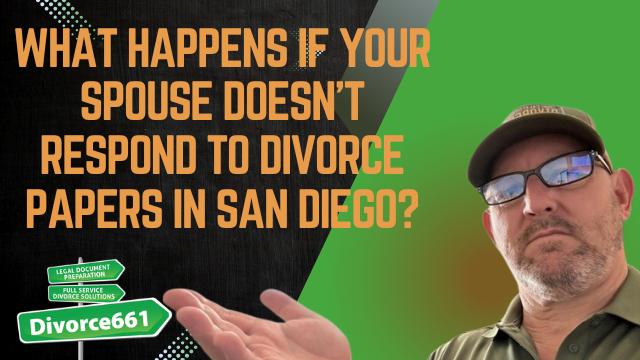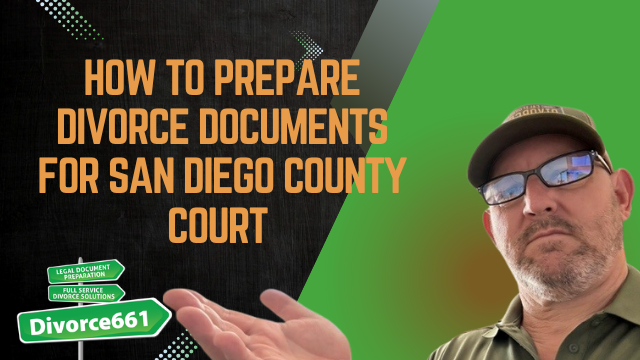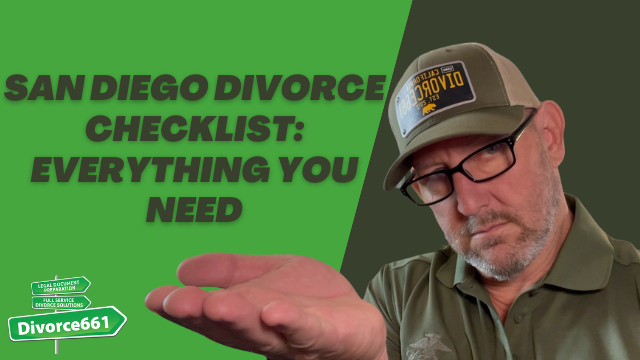Divorce661 Reviews: The Best Divorce Service in San Diego?
I’m Tim Blankenship, founder of Divorce661. If you’re thinking about a San Diego divorce and wondering whether you really need an expensive attorney or can handle it yourself, this article is for you. I created a short video to share real client experiences and explain how our flat-fee, remote divorce service helps couples finalize amicable divorces quickly and correctly. Below I’ll walk you through the common pitfalls of DIY filings, how our service fixes rejected paperwork, and why working with Divorce661 is often the faster, less stressful path.
Why DIY Divorces Often Fail
Many couples believe they can handle divorce paperwork on their own. Unfortunately, the reality is that DIY filings frequently get rejected or delayed. Courts have strict formatting, filing, and procedural requirements. A small mistake—an incorrect form version, missing signature, wrong jurisdiction box, or improper filing method—can send your case back to you and add weeks or months to your timeline.
- Rejected filings create delays and extra costs.
- Confusion about local court rules can lead to repeated errors.
- Lack of experience with e-filing systems increases the chance of mistakes.
- Stress and uncertainty grow when couples must fix paperwork themselves.
How Divorce661 Fixes Problems Fast
We specialize in amicable, uncontested divorces across San Diego County. When a court rejects paperwork, we know exactly what to change, refile, and how to get approval quickly. Our experience with San Diego courts means we avoid common mistakes and streamline the process from start to finish.
- We prepare and review all required documents to meet court standards.
- We e-file on your behalf and handle any requests from the court.
- We prepare court-approved settlement agreements and judgments.
- We complete the process without requiring you to appear in court for most uncontested cases.
Our Process — Simple, Remote, and Court-Focused
Our goal is to make your divorce as straightforward and stress-free as possible. Here’s how it typically works:
- Free consultation: We assess your situation and confirm eligibility for an uncontested divorce.
- Document preparation: We draft and review the necessary forms and agreements, tailored to San Diego court requirements.
- E-filing and follow-up: We file the paperwork electronically and handle any court communications or fixes.
- Finalization: Once the judge signs the judgment, your divorce is finalized—often without either spouse needing to go to court.
Everything can be handled remotely, so you can complete your divorce from the comfort of home and save time and stress.
Real Client Story
“We tried on our own, got rejected—Divorce661 handled everything and we were done in weeks.”
This San Diego couple’s experience is a common one. They attempted a DIY filing, encountered a rejection, and then turned to us. We corrected the issues, refiled, and finalized their divorce quickly—without attorneys or court appearances. That outcome is exactly what we aim to deliver for amicable couples: speed, clarity, and a stress-free path forward.
Why Choose Divorce661?
When you choose Divorce661, you get:
- Flat-fee pricing with no hidden costs—clear, predictable fees.
- 100% remote service across San Diego County—handle everything from home.
- Expertise in e-filing and judgment approval specific to San Diego courts.
- No-attorney divorce services for amicable, uncontested cases—court-approved paperwork without hiring a lawyer.
- Fast finalization by avoiding the common mistakes that cause rejections and delays.
Is Divorce661 Right for You?
Our service is designed for couples who are in agreement on the major issues and want a quick, affordable, and legally sound divorce. If your case is contested, involves complex financial or custody disputes, or requires litigation, an attorney may be necessary. For uncontested divorces, however, our proven process is an efficient alternative.
Next Steps — How to Get Started
If you want a fast, affordable divorce done right the first time, schedule a free consultation. We’ll review your situation, explain the steps, and let you know how we can help get your case finalized without unnecessary stress.
Visit divorce661.com to book your free consultation and learn more about our services.
Conclusion
DIY divorce might seem like a money-saver, but the risk of rejected filings and extended timelines often outweighs the cost. At Divorce661, we take the stress out of the process: correcting mistakes, e-filing properly, and getting court-approved judgments without requiring attorneys or court appearances for amicable cases. Join the many San Diego couples who have successfully navigated their divorce with our help—take the first step today and regain control of your life.










